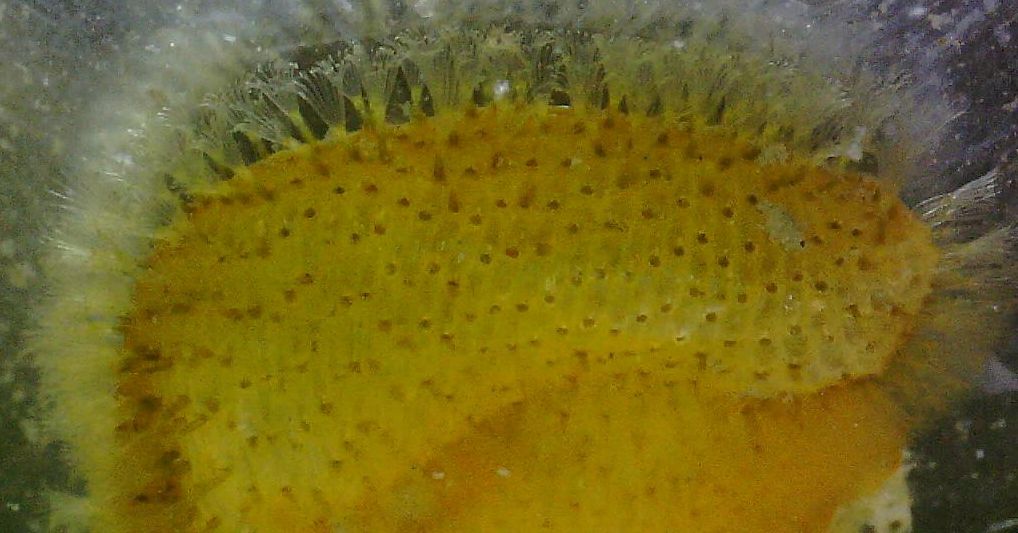Description: This species is an encrusting colony composed of calcified tubes, all about the same size, and fused together. It grows out into fanlike lobes. The apertures are round and have no operculum. It has no avicularia nor spines. The ooeciostome is on the end of the ovicell, separate from a peristome, and has a round aperture about 60-80 microns in diameter. The peristomes are not arranged in bundles nor in rows (though the above specimen appears to have roughly diagonal rows).
How to Distinguish from Similar Species: Some other species such as Tubulipora spp have the ooeciostome at the side of a zooecial tube and its aperture is not round.
Geographical Range:
Depth Range:
Habitat:
Biology/Natural History:
| Return to: | |||
| Main Page | Alphabetic Index | Systematic Index | Glossary |
References:
Dichotomous Keys:Kozloff, 1987, 1996
General References:
Scientific Articles:
Web sites:
General Notes and Observations: Locations, abundances, unusual behaviors:

Another close-up view of the colony, with the lophophores
of many individuals extended. Each lophophore
is roughly 1 mm long.
Click HERE
for a short
movie showing movement of the lophophores.
Authors and Editors of
Page:
Dave Cowles (2015): Created original page
CSS coding for page developed by Jonathan Cowles (2007)
Salish Sea Invertebrates web site provided courtesy of Walla
Walla University